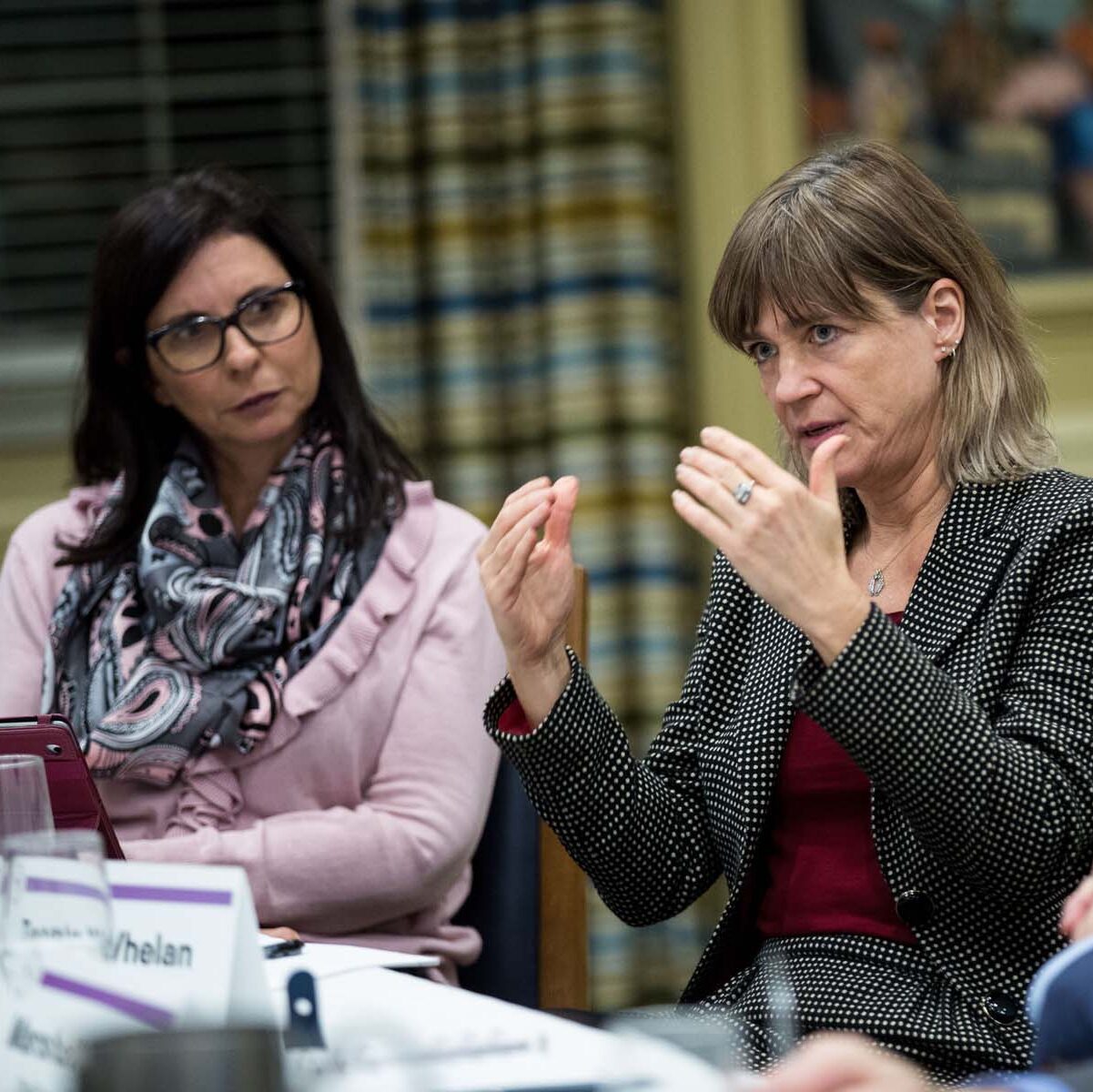


A typical strategy offsite starts with an ice breaker. Then there’s a brainstorm where everybody’s ideas on what the company should be working on are logged. Ideas are thrown around, colored stickers are used to ‘vote’ on favorites and a list is created within a few hours. While the process is quick and everyone gets a voice, it is not the most effective way to define your strategic midterm priorities, nor is it a process that’s going to get to a true robust list for growth. Strategy and top priorities are not something to gamify.
Strategy processes are getting squeezed. To streamline, we’re using basic templates. To ensure everyone gets a voice, we’re involving more people in the final decision-making phases. Speed matters, as does engagement, but combining the two is simplifying strategy in an unhelpful way. Insights have left and been replaced by the same set of generic priorities: profitable growth, operational efficiency, digital and AI, growth markets, customer centricity and people engagement. Great things, yes, but the same list as everyone else.
Let’s bring insights back into your growth strategy and set yourself up for building and executing a true growth strategy. You can do so by answering six critical questions, and in this specific order:
Strategy has always been developed under uncertainty. Strategists never know everything they would like to know about a situation, and the reactions of others to the situation are essentially unknowable. But that does not mean we are completely in the dark. It is just a matter of working out what is going on in the half-light around us better than other people, and then learning faster than others. How we do this is starting a strategy process with our beliefs.
Having robust and productive conversations leading to strategy insights is only possible if you have a clear and simple situation assessment on hand, so that’s your starting point. Building a situation assessment comes from four steps. First, what are the key trends shaping your industry and market right now? Second, and more critically, what do you believe to be true based on those trends? Third, what do you now know that you need to know, or test, to learn more? And then, what do your beliefs imply for potential implications? Given these beliefs, what should you do, or not do?
Consider building a strategy starting by completing this question many times: We are seeing X, and we believe Y for the next three years, which means Z for us. The power move is the middle step: the belief. Avoid the temptation of jumping from trend to implication—articulate your beliefs first. Your beliefs guide your choices, and these strategic beliefs become the foundation for making strategic choices and testing and adjusting them over time.
This is a competitive game—you are setting and executing strategy to win. Strategy is an articulation of how you will create value: move the needle up (customer willingness to pay) or down (total cost) or keep the needles apart. Your competitive advantage expresses how you will force these two needles apart, but more critically, competitive advantage—your Right to Win—articulates how you will continue to keep the needles apart over time.
A major difference exists between having a Right to Play and a Right to Win. Before you address where you want to play in the market, you need clarity on how you are differentiated. And only three avenues allow you to win:
With your team, go through each aspect of your business and ask these critical questions: what do we have that others don’t? What can we do that others cannot? How can we build moats? To build a Right to Win, you want these resources and capabilities to be valuable or able to make you more money than they cost you; rare or hard to access and not widely possessed by others; and inimitable. Having inimitability is the ‘holy grail’ of strategy, as this means others can watch you, study you, spend more money than you have and still not be able to do what you can do in three to six years.
Be prepared to identify gaps in your Right to Win at this stage— you can discuss how to close them, but don’t ignore the insights this set of questions gives you. Also remember to address your Right to Win going forward—that is, in the world you believe will happen (based on your beliefs) and not in the previous world.
Deciding where to compete in your market involves tough tradeoffs. Many options may look attractive, and it can feel easier to have more on the table than less. But a company that tries to be everything to everyone is a company for no one. The potential playing field is intimidatingly large, but to be able to win, you must draw some lines and declare definitively, “We are going to play here.”
Making these informed decisions comes from addressing the overlapping questions of:
These sub-questions, what I term the WhoWhatHow, should be addressed based on your Right to Win from the previous question. We compete where we have, or will soon have, differentiation. Ensure that these fit or reinforce each other. Your WhoWhatHow is the heart of value creation, so spend the time here and also put new options on the table.
At this halfway point, now it’s time to ask, given these insights, where should we be trying to go? What does success look like?
Strategies need a finish line. If you do not know where you want to be by the end of the strategy cycle, then any path or set of priorities may or may not take you there.
But strategy has another job: to help us understand how to act and react as we execute towards that finish line, as unexpected things will happen along the way. So, you also need to determine the boundaries, or the non-negotiables or parameters your team must stay within as you run towards that finish line. There is a paradox here: Boundaries are not what you are trying to optimize. You are trying to optimize the main intent. But boundaries are more critical because they cannot be breached. Leave this set of questions with a clear goal (finish line) and boundaries (fences) to stay within as you run there.
After resetting your definition of success, you want to make the path to get there is as clear as possible. You do not want to be thrown off course, and the best way to avoid that happening is to think through what could do that— ‘What could stop or break us?’
People often ask: ‘Why should we talk about our top challenges before setting our top priorities? Shouldn’t we set the top priorities first and then ask what the challenges to execution are?’ It’s better to identify the biggest challenges the organization is facing first, because sometimes addressing them becomes a top priority.
The definition of success is WHAT you will achieve. Your top priorities are then HOW you will achieve this. So defining your top priorities should be the last question to discuss, as you need the insights from the previous questions to answer it correctly.
At this last step, watch for linear growth traps and avoid reframing or updating your current list of initiatives and priorities every time. Doing the same things a little better every strategy cycle is not a growth strategy. Rather than starting a new topic, as a team, pull the top insights from your most critical beliefs, your gaps to close (as well as your strengths to leverage) in your Right to Win, the keen insights from new ‘where to play’ choices, the critical pathways needed to reach success and the top challenges that need to be addressed to get there.
While this feels like a longer list, you will have identified only a few overlapping themes from the questions above, and these are now your top, midterm priorities. You want a final list of fewer than six to make a major difference to value creation.
So what should we do? Let the critical insights of how the situation is evolving and how you can win guide you to a clear, compelling finish line then a set of priorities to get there.
This will take a few days rather than a few hours, but you are building a base to make decisions faster and better as the team executes. Executing a winning strategy through changing markets means you need to slow down and agree on insights and gaps so you can speed up as you execute your priorities.
And strategies with clear growth insights and executable priorities tend to win.
Adapted from Survive Reset Thrive: Leading Breakthrough Growth Strategy Through Volatile Times by Rebecca Homkes.



0

1:00 - 5:00 pm
Over 70% of Executives Surveyed Agree: Many Strategic Planning Efforts Lack Systematic Approach Tips for Enhancing Your Strategic Planning Process
Executives expressed frustration with their current strategic planning process. Issues include:
Steve Rutan and Denise Harrison have put together an afternoon workshop that will provide the tools you need to address these concerns. They have worked with hundreds of executives to develop a systematic approach that will enable your team to make better decisions during strategic planning. Steve and Denise will walk you through exercises for prioritizing your lists and steps that will reset and reinvigorate your process. This will be a hands-on workshop that will enable you to think about your business as you use the tools that are being presented. If you are ready for a Strategic Planning tune-up, select this workshop in your registration form. The additional fee of $695 will be added to your total.

2:00 - 5:00 pm
Female leaders face the same issues all leaders do, but they often face additional challenges too. In this peer session, we will facilitate a discussion of best practices and how to overcome common barriers to help women leaders be more effective within and outside their organizations.
Limited space available.

10:30 - 5:00 pm
General’s Retreat at Hermitage Golf Course
Sponsored by UBS
General’s Retreat, built in 1986 with architect Gary Roger Baird, has been voted the “Best Golf Course in Nashville” and is a “must play” when visiting the Nashville, Tennessee area. With the beautiful setting along the Cumberland River, golfers of all capabilities will thoroughly enjoy the golf, scenery and hospitality.
The golf outing fee includes transportation to and from the hotel, greens/cart fees, use of practice facilities, and boxed lunch. The bus will leave the hotel at 10:30 am for a noon shotgun start and return to the hotel after the cocktail reception following the completion of the round.